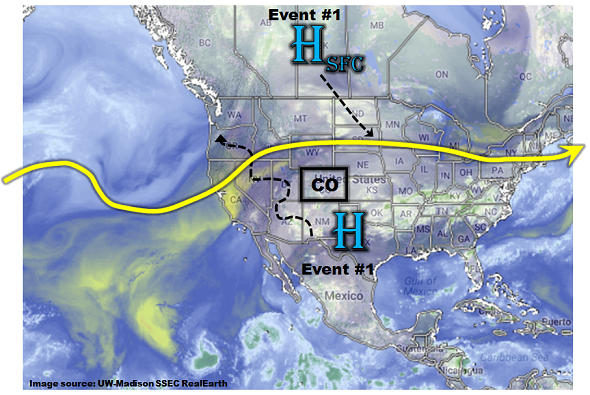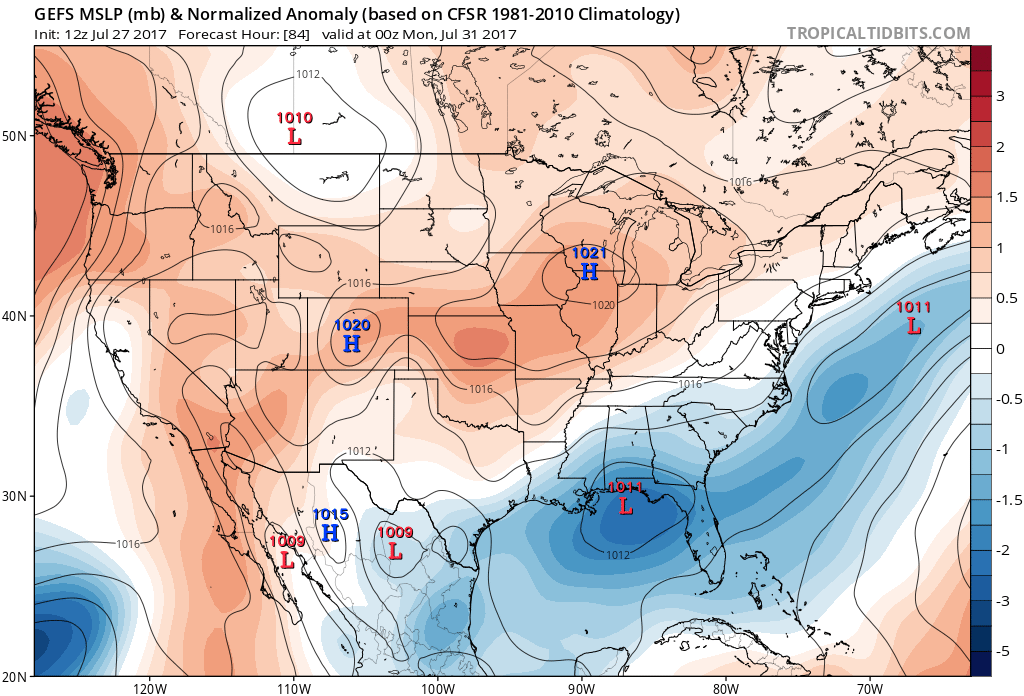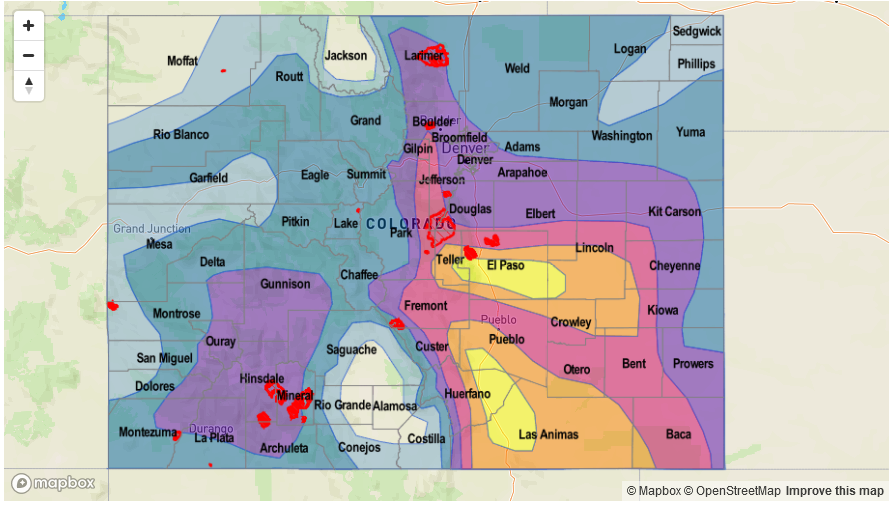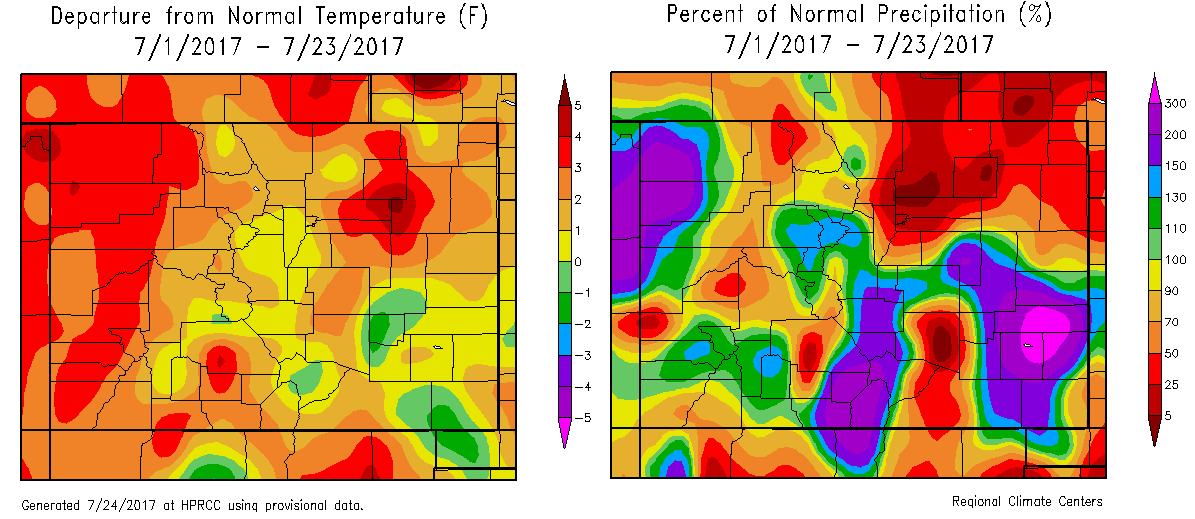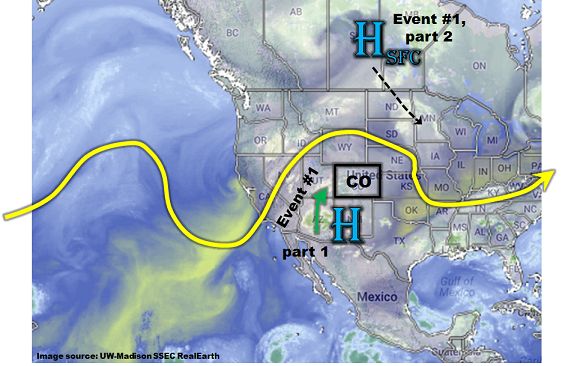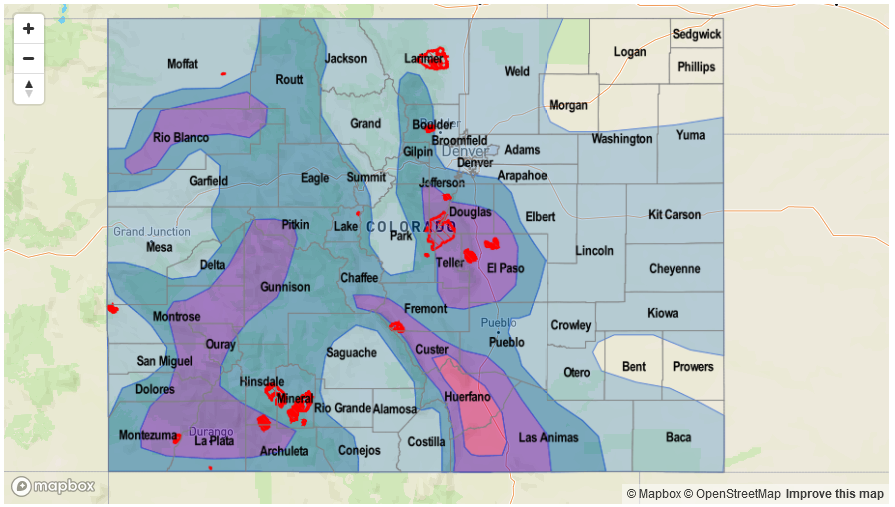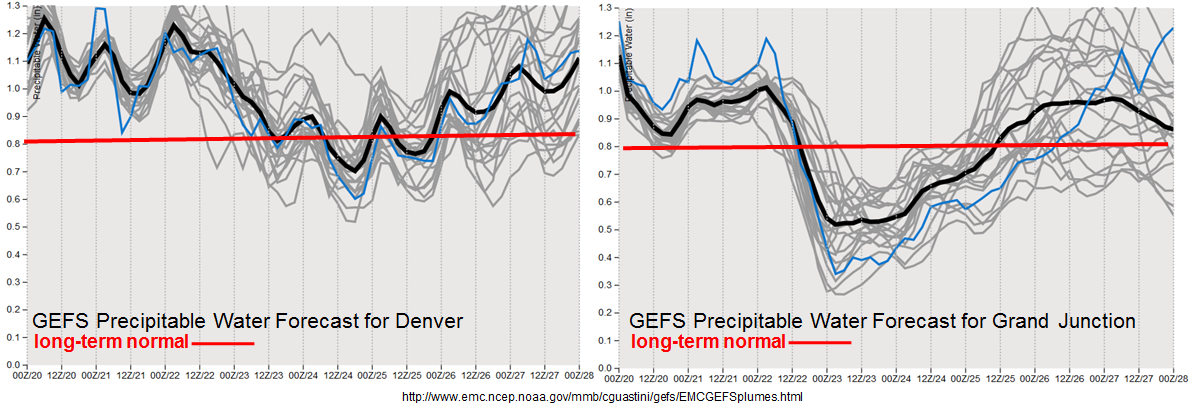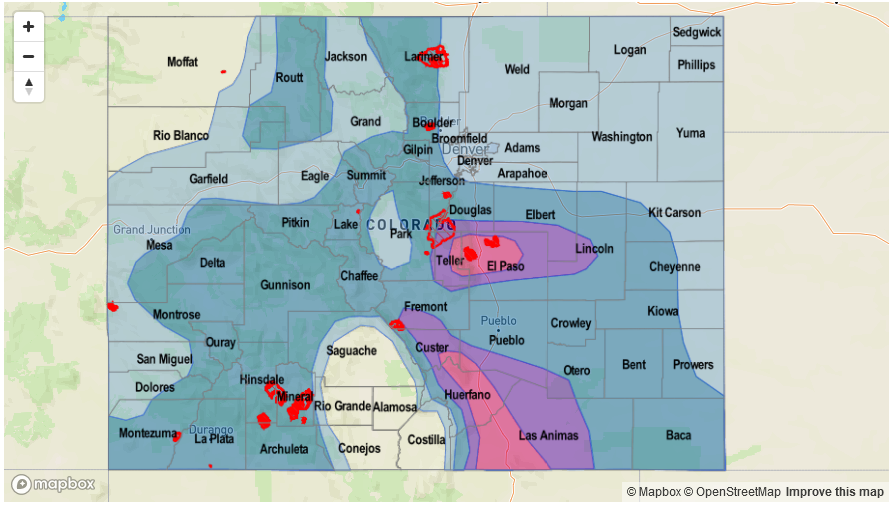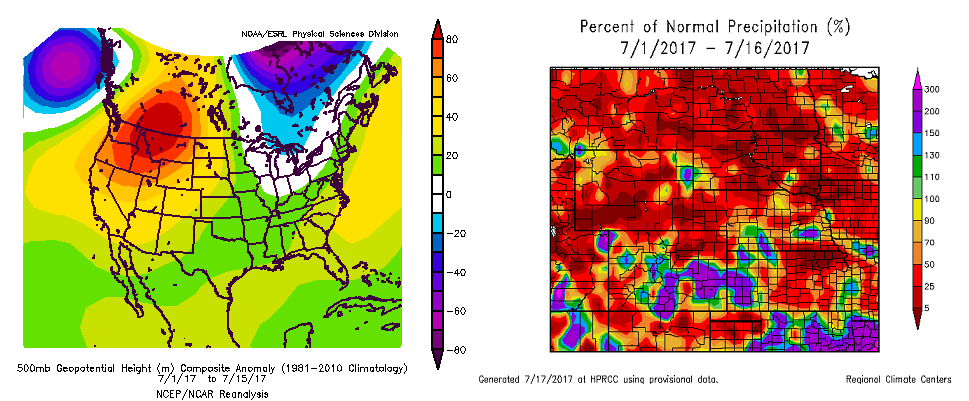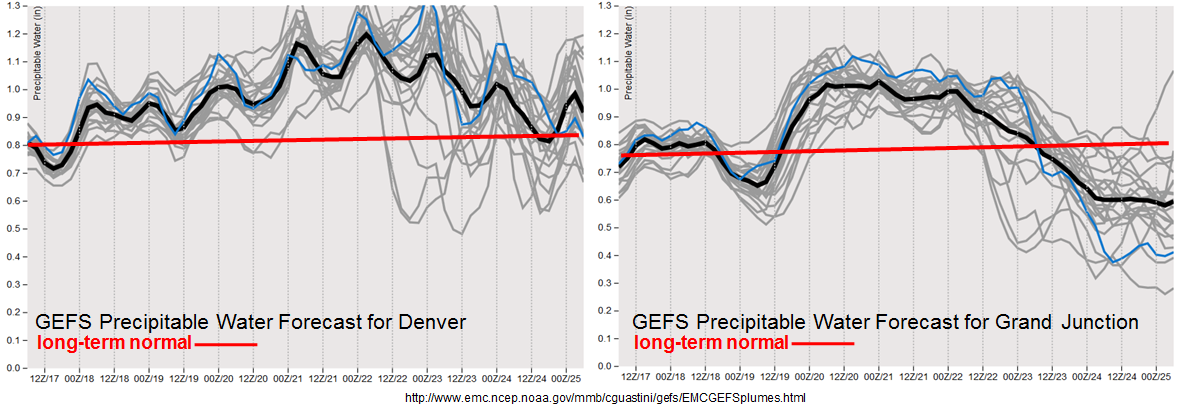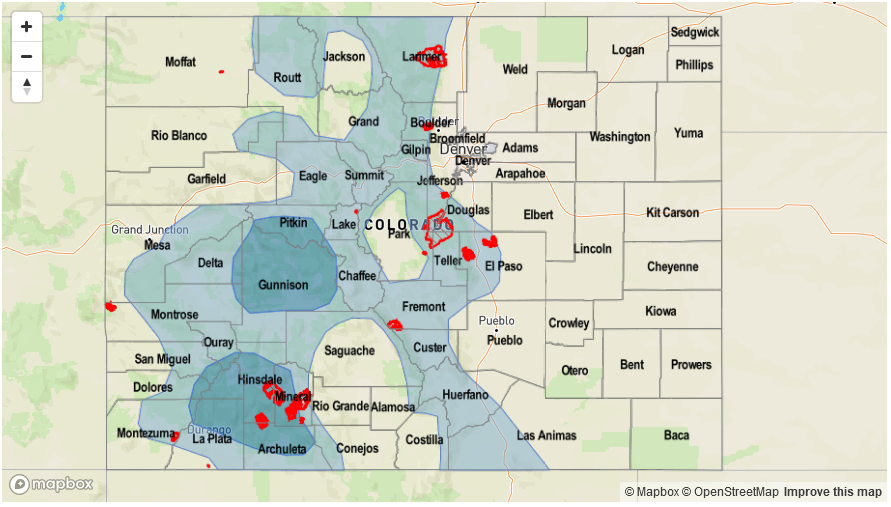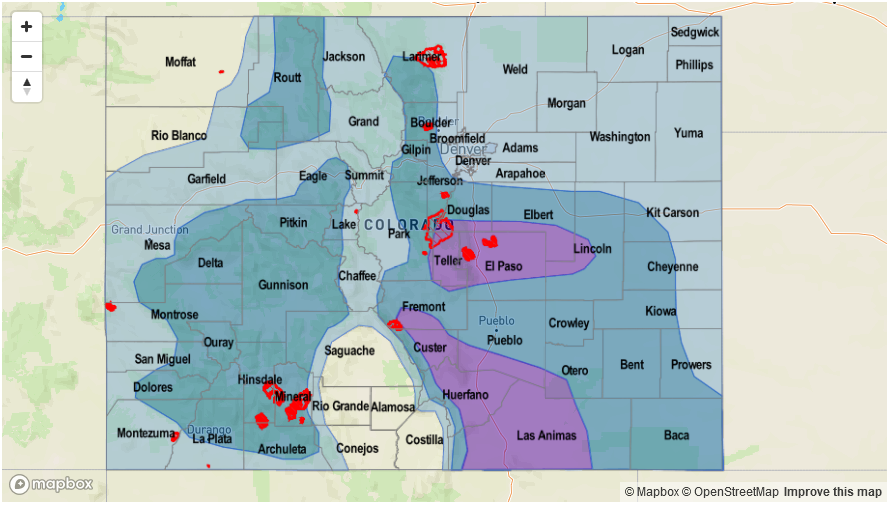Issue Date: Thursday, July 27, 2017
Issue Time: 3PM MDT
Valid Dates: 7/28-8/11
If you have ever read either our Flood Threat Bulletin or Flood Threat Outlook discussions, you can probably quickly recall how much emphasis we place in analyzing moisture content when developing the flood threat forecast. The reason for this is that sometimes, especially in the summertime, moisture is as good or better predictor for heavy rainfall that any other guidance, including model Quantitative Precipitation Forecasts! For you technical readers, please refer to this paper in the Monthly Weather Review journal for more information. In short, it is not so much that moisture is a good predictor of where or when thunderstorms will develop, or even how long they last, but it is a good predictor of the upper limit of their potential rain rates.
So how has moisture fared across Colorado recently? With little shock, the table below shows significantly above normal amounts over (at least) the past 7 days, as measured by column integrated Precipitable Water at both the Denver and Grand Junction evening soundings (the asterisk in the measurements at Denver signify that the radiosonde did not sample the entire atmosphere, implying that this reading underestimates the actual PW). This was recently punctuated by values over 70% above normal, interestingly coinciding with one of the wettest 48-hour periods observed thus far this summer.
As this afternoon’s water vapor image shows, below, the same familiar players will once again be in charge of flood potential for the next 5 days or so. The first feature is the upper-level ridge that is currently centered just south of Colorado. As long as the western periphery of this ridge does extend too much west of the Four Corners region, this typically allows for the transport of low and mid-level level monsoon moisture into Colorado. This is expected to continue over the next 5 days, keeping elevated moisture and above normal heavy rainfall chances in the picture.
The second, and often overlooked feature, is the presence of surface high pressure features that act to (i) move southward “cool” fronts, especially across eastern Colorado and (ii) more importantly, provide enhanced pulses of moist upslope flow that can interact favorably with the climatological circulation to accentuate and expand the lifetime and eastward extent of the elevated convection over our higher terrain. As shown below in an interesting analysis of surface pressure anomalies available on the Tropical Tidbits model site, another surface high pressure is expected to move southward out of Canada. By Sunday and Monday, a stronger than normal fetch of moist, upslope easterly flow is expected across southeast Colorado. The result will be a pattern conducive for slow moving storms capable of producing very heavy rain rates, much like on Wednesday.
After the passage of this surface high pressure, guidance has now come into good agreement that the upper-level ridge will shift westward, which will drastically reduce moisture levels across most of Colorado. Heavy rainfall and precipitation chances are expected to lessen to below their climatological average accordingly.
For this edition of the 15-day Flood Threat Outlook, we have identified one prolonged Elevated/High flood threat event that is discussed in more detail below.
Event #1: Friday (7/28) through Tuesday (8/1)
Elevated/High Flood Threat for flash flooding, debris slides and mud flows, especially over higher terrain
Above normal moisture will persist statewide through early next week. Precipitable water is expected to remain in the 0.9 – 1.6 inch range, which will support daily bouts of scattered to numerous shower and thunderstorm activity from Friday through Tuesday. Rain rates up to 1.4 inches per hour (west) and 2.9 inches per hour (far east) will be possible, which will support an elevated flood threat. Highest coverage will be over the higher terrain, especially east of the Continental Divide as well as southeast Colorado. On Sunday/Monday, a cool front is expected to enhance rainfall coverage over southeast Colorado and amplify the intensity further, sustaining longer duration heavy rainfall. Current guidance suggests 3-hour rainfall up to 4 inches will be possible in the foothills of the Sangre de Cristo and Wet Mountains. Max 3-hour rainfall up to 2.4 inches will be possible in the San Juan Mountains.
As with the recent heavy rainfall event on Wednesday, this event will not have significant upper-level support implying that sustained heavy rainfall, beyond 3 hours, will not be likely. Thus, currently the main impacts of this event will be mud flows and debris slides in higher elevation locations, as well as small stream flooding associated with the stronger cells. Major riverine flooding is not expected at this time. Please stay tuned to daily Flood Threat Bulletins for more detailed information, especially if you plan on camping and hiking over the weekend.


